Depth of Feeling
In real life Roberta Maxwell, the gifted New York actress who’s quietly riveting as Jake Gyllenhaal’s bereaved mom during a four- or five-minute scene near the finale of Brokeback Mountain, barely resembles her emotionally bruised, hardscrabble character.
Her face is pale and plain and vaguely trembling in Ang Lee’s film, and with short, sort-of-mousey red hair. Very much a cowering but compassionate farmer’s wife from Wyoming. But the woman who opened her apartment door at 6 pm on New Year’s Eve was a pert and sophisticated New Yorker in glasses, her blondish-gray hair cut even shorter and her eyes the opposite of morose.
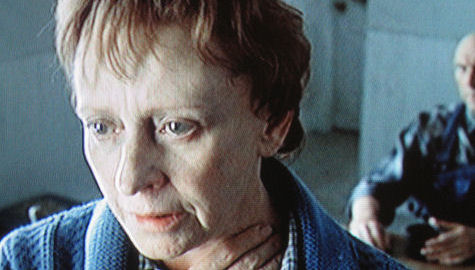
Roberta Maxwell during the second-to-last scene in Ang Lee’s Brokeback Mountain
Imagine that! An actress who can not only manipulate her appearance but do a little internal tossing of the emotional salad.
Maxwell isn’t the only Brokeback Mountain actress who supplies a strong dose of hurt — there’s also the excellent Kate Mara and Linda Cardellini as Heath Ledger’s daughter and jilted girlfriend, respectively, on top of Michelle Williams and Anne Hathaway’s lead performances as unhappy wives — but Maxwell makes her mark in what is arguably the film’s penultimate scene.
< ?php include ('/home/hollyw9/public_html/wired'); ?>
It’s obvious that Maxwell’s mom and her scowling homophobic husband (played by the great Peter McRobbie) know what kind of relationship Ledger’s Ennis del Mar had with their son Jack, but her grief-ridden face is full of acceptance and compas- sion when del Mar pays a visit. And all of this hemmed in by fear of her husband’s rattlesnake temperament.
It’s the quiet but devastating interplay between Maxwell, McRobbie and Ledger that increases the film’s sadness to peak strength and sets up the film’s final hit, which comes when Mara tells Ledger she’s getting married to an oil-field worker named Kurt, and then leaves him alone in his trailer with Jack’s shirt hanging in the closet.
In fact, the more you watch Maxwell’s scene (I have a DVD screener of the film), the more clear it becomes that her underperforming of this exquisitely shot den- ouement is the emotional springboard of that last ten- or twelve-minute section. She’s got the whole film in her eyes.
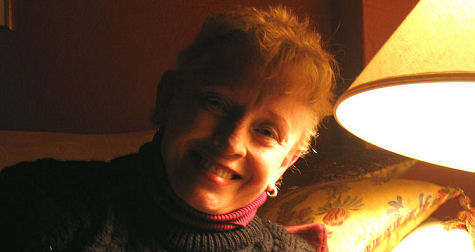
Snapped about six hours before midnight in Maxwell’s Manhattan apartment — 12.31.05, 6:15 pm
And she had only a few hours to make it work.
Maxwell shot her footage in July 2004, not on a set but inside the rundown farm- house seen in the film, which is located about an hour outside Calgary, Alberta, which was a cheaper place to shoot than Wyoming, where most of the film’s story unfolds.
“When I arrived at the set, people were getting ready to leave,” she recalls. “It was the very end of the shoot.”
Jack’s mom is “a lifelong Pentecostal Christian,” says Maxwell. “And in this last scene we see this tension and fear about what she knows her husband feels about this relationship, and about great cruelty and suffering she has endured herself, but she shows compassion to Ennis because she can see Jack was obviously very much loved.”
Maxwell suspects that Brokeback Mountain‘s casting director Avy Kaufman arranged a meeting with director Ang Lee a few months earlier because she had played the mother of Sean Penn’s condemned prisoner in Dead Man Walking (’95) and “so I have a history of sad mothers.”
She sensed during her sit-down with Lee that “we had connected on a level that would make me a very strong competitor [for the part].”
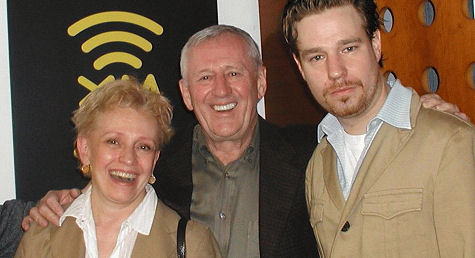
Maxwell, Len Cariou and director Ethan McSweeny during a promotional stint on behalf of a relatively recent Pace University production of “The Persians.”
Brokeback Mountain had been showing to industry and festival audiences since early September, but Maxwell didn’t see it until it opened commercially on December 9th.
“I was really shocked by the scene, by our scene,” she recalls. “The starkness of it…the simplicity. And how [Lee] shot it, like when I put my hand on Heath’s shoul- der. I grabbed my friend sitting next to me. It was so strange, this old hand…I said to myself, is that mine?”
Maxwell began as a child actor in the ’50s, and has done lots of New York theatre, television, TV movies and features.
Her Dead Man Walking performance was, if you ask me, the big standout before Brokeback Mountain. She played the judge in Jonathan Demme’s Philadelphia (i.e., the one administering when Tom Hanks collapsed in court). And she had the lead female role in the 1975 debut stage production of Peter Shaffer’s Equus with costars Anthony Hopkins and Peter Firth. (That’s right…the naked-in-the-stables role.)
Maxwell was told in early October that her performance was special by none other than Annie Proulx, the author of the “Brokeback Mountain” short story that Larry McMurtry and Diana Ossana’s screenplay is so closely based upon. The advance review came in the form of a letter, and it brought Maxwell to tears.

Sometime around ’76 or ’77
It reads: “Dear Roberta Maxwell — Just the right touch…the almost-crushed wife of a martinette who under his very nose and in only a few lines about cake and coffee, gets across the message that she knew and understood what Jack meant to Ennis. I don’t know how you did it in so small a compass. With much apprecia- tion, Annie Proulx.”
Maxwell read this to me aloud near the end of our talk. Here’s a recording of about half of it.
She asked last night how I think Brokeback Mountain will do at the Oscars, and when I repeated the conventional wisdom that it’s the Best Picture front-runner, she feigned surprise. I would play it that way if I were her.
Maxwell told the Toronto Star‘s Martin Knelman that she’ll be visiting Los Angeles soon “so I can enjoy the fun of Brokeback being touted for the Oscars. It’s such a special time and such a special film. Why not enjoy it while it lasts?”
If it were my call (and I can’t imagine Focus Features not feeling the same way), Maxwell will wind up sitting next to her costars and Lee and the film’s producer James Schamus and all the others at the Oscar Awards. If there’s anyone apart from the core players who deserves such an honor, it’s Maxwell.
I mean, c’mon, she’s the ninth-inning pinch hitter…the windup, the pitch…thwack!

Snowstorm Grabs

(l. to r.) Subway tracks leading from Marcy Street into Manhattan during height of yesterday afternoon’s very slushy snow storm — 12.31.05, 3:05 pm


Budget-level Chinese restaurant in Chinatown, near corner of Mott and Bayard.

There’s a character in Woody Allen’s What’s Up, Tiger Lily called Wing Fat, played by Susumu Kurobe…and the name was meant as an ethnic goof

Oh-Six Starters
There are four January releases that definitely cut the mustard in my pantry, and two or three with one or two problems but are recommended regardless. So things are starting off reasonably well. For a month known for so-so product, I mean.
The absolute must-see’s are Lajos Koltai’s Fateless (Thinkfilm, 1.6), Eugene Jarecki’s Why We Fight (Sony Pictures Classics, 1.20), Steven Soderbergh’s Bubble (Magnolia, 1.27) and Michael Winterbottom’s Tristram Shandy: A Cock and Bull Story (Picturehouse, 1.27).
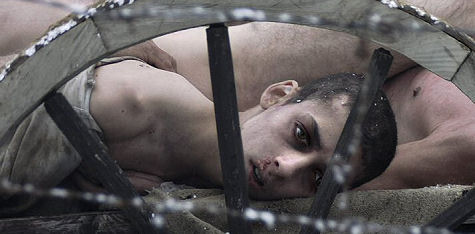
From Lajos Koltai’s Fateless (and not what it seems to be)
The not-bad-with-reservations in order of preference are Ol Parker’s Imagine Me and You (Fox Searchlight, 1.27), Albert Brooks’ Looking for Comedy in the Muslim World (Warner Bros., 1.20) and Lars von Trier’s Manderlay (IFC Films, 1.27).
I’ve seen some others and can riff a bit about them, but aside from these six or seven we all know what January is about. That is, if you aren’t priveleged or con- nected enough to go to Sundance and you pay to see new movies in your local plex. It’s about feeling vaguely burned.
Or it’s about catching up with Xmas films and watching more DVDs than usual or maybe picking up a book…but the mood that settles over a multiplex in January is rarely expectant, much less electric.
Here’s what I know, have heard or am deducing thus far…
January 6: Fateless is the first near-great film of 2006. The exquisite widescreen framing, desaturated color and exquisite editing make it, to my eyes, the most visually immaculate Holocaust death-camp drama ever made (does that sound right?) as well as one of the most realistic seeming and subtly-rendered in terms of story.
Based on Imre Kertesz’s mostly true-life account, it’s about a young Jewish boy from Budapest who ends up in a concentration camp during World War II and just barely survives. It lacks the story tension and rooting factor of Polanski’s The Pianist, but situations of hunger, despair and the ashy aura of near-death have never been rendered with such remarkable pictorial finesse.
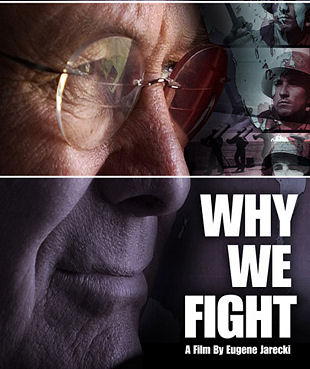
Otherwise, I’ve been told by a young guy I completely trust that Grandma’s Boy is absolutely atrocious. I don’t know about BloodRayne except for the hot babe in the poster. I’ve seen the Hostel trailer and that’s as far as I go. Not a very brave or engaging attitude, I’ll admit. (I generally loathe horror films even though I rather liked Wolf Creek, which so many other critics were deeply offended by.)
January 13: The only one I’ve seen is Laurence Dunmore’s The Libertine (Weinstein Co.) and the less said about it, the better. Johnny Depp is utterly dislikable as a smart but self-destructive Old World asshole named John Wilmot, the second Earl of Rochester. Muddy, desaturated color…gobs of period detail without no discernible spark of life…an almost completely detestable film.
The trailer for Kevin Reynolds’ Tristan & Isolde (20th Century Fox)…oh, no….oh, no….Rufus Sewell is in it. I’m sorry but that tears it. And please…not another swords-and-horses romantic triangle King Arthur– slash-First Knight-type thing. How can studio executives greenlight this stuff and still look at themselves in the mirror?
James Franco (Tristan) is a very fine and charismatic actor who can’t seem to catch a wave, much less a break. (He’s also in Justin Lin’s Annapolis, opening on 1.27.) Sophia Myles, whom I liked in Art School Confidential, is a very intelligent, seemingly passionate actress with a very chubby moon face. Curvy, not-slim actresses are becoming more and more common these days, but there haven’t been any high-wattage moon-faced actresses since the days of Theda Bara.

Misty Wilkins, hot-stuff star of Steven Soderbergh’s Bubble
And zipposky on April’s Shower, Glory Road, Hoodwinked, Last Holiday, On The Outs.
January 20: Eugene Jarecki’s Why We Fight is not just the best film being released on this date but sure to be listed among the year’s (and probably the decade’s) finest also. A brilliantly told history of America’s military industrial complex and war machine. And very well made…well paced…totally blue-chip all the way. John McCain, Gore Vidal, William Kristol, Chalmers Johnson and Richard Perle are among the talking heads.
There are good things — more than a few good things — in Albert Brooks’ Looking for Comedy in the Muslim World (Warner Bros.). It’s dry and disciplined and somewhat amusing here and there, but it has an older guy’s energy levels and — frankly? — not that great a story.
You’d think a movie about what makes Muslims laugh would at least take a stab at answering this question. And it would have worked better if Brooks (playing himself) had somehow managed to visit the real Muslim world (Iraq, Saudi Arabia, Jordan, et. al.) instead of India, where most of this film takes place.
India is not where the terrorists are. Call for tech support and a very polite idiot who knows absolutely nothing about how to help you with your problem…that‘s India.
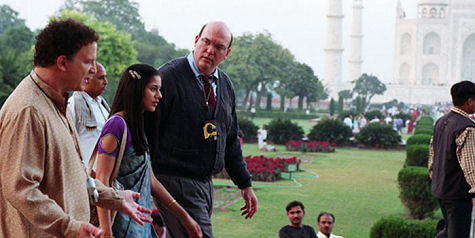
Albert Brooks (l.) in Looking for Comedy in the Muslim World
You know that Underworld: Evolution (Screen Gems), the Underword sequel, is solely about trying to grab a portion of the $100 million earned by the original. With Kate Beckinsdale and Scott Speedman reprising their roles, what are the odds of this being any more that the usual breathy-moldy-sexy CGI vampire-werewolf crap?
The trailer certainly gives every indication it’s a straight programmer and strictly a paycheck movie for the talent. If it rises even a tiny bit above the level of pure bilge I will buy a red rubber enema bag and do the appropriate thing.
Nothing about End of the Spear, Pizza, The Real Dirt on Farmer John.
January 27: Bubble is a minimalist murder tale from Steven Soderbergh, shot on video with non-pro actors. It’s a very clean, creepy and absorbing piece. It’s modest but damn fine within its perimeter. I consider Bubble Soderbergh’s return to form — the first high-grade wow thing he’s done since Traffic.
I wrote during the Toronto Film Festival that “as far as I’m concerned Bubble, a heart-of-proletariat-darkness drama, is reason to pop open the champagne and breathe easy. Soderbergh was falling off the horse repeatedly with Full Frontal, Solaris and the two Ocean‘s movies…but he hunkered down and stayed with the process and that constant-state-of-becoming trip that all artists need to be into, and now he’s back.”
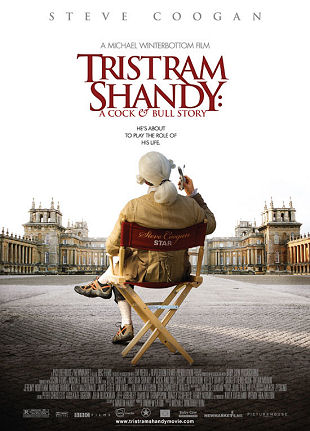
Oh Parker’s Imagine Me and You, which I saw at Toronto, is one of those rotely British romantic confections, although nowhere near as sickening as Love Actually and for the most part a reasonably decent and even (at times) touching thing.
It’s about a woman (Piper Parabo) who falls in love with another woman (Lena Headley) on her wedding day…which leaves her husband Heck (Matthew Goode) confused and out in the cold. It’s formulaic and tidy, although at times I could feel the capability on Parker’s part (if not the willingness) to make a complex adult relationship drama along the lines of John Schlesinger’s Sunday Bloody Sunday.
I didn’t hear a single unkind word about Tristram Shandy: A Cock and Bull Story during the Toronto Film Festival, so even though I didn’t see it myself it seems like a reasonably safe call to put it on the recommend list.
It’s basically the bone-dry British funnyman Steve Coogan starring in some kind of smart-ass variation of Karel Reisz’s The French Lieutenant’s Woman (1982). It’s a film about the making of an historical film — an adaptation of Laurence Stern’s “The Life and Opinions of Tristram Sahndy, Gentlemen” — while at the same time a look at the historical characters as well as the actors portraying them.

Willem Dafoe, Bryce Dallas Howard in Lars von Trier’s Manderlay
After seeing Lars von Trier’s Manderlay in Cannes last May I wrote that “it didn’t do it for me, and I’m speaking as a totally ardent fan of von Trier’s Dogville, Dancer in the Dark and Breaking the Waves, as well as being a general fool for his bad-boy provocations.
“It’s a relentlessly talky, intelligent and provocative film that addresses…well, American racism, certainly, but more generally a do-gooder tendency by American governments to try and shape other societies so they more resemble our own (Iraq, Vietnam, etc.). And it indulges in the usual proddings and agitations that are par for this Danish filmmaker.
“The second installment in von Trier’s America trilogy, Manderlay is a continuation of the adventures of Grace, the gangster’s daughter played by Nicole Kidman in Dogville, the trilogy’s 2003 kickoff, and by Bryce Dallas Howard in the new film.
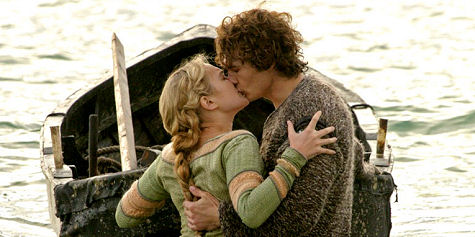
Sophia Miles, James Franco in Kevin Reynolds’ Tristan and Isolde
“Both films are stagey and pedantically inclined, and shot on what is probably the same massive sound stage with imaginary props and sets. (The third installment will presumably follow suit.)
“Manderlay is too similar to Dogville and not similar enough. Despite its slow pace and too-gradual plot development, Dogville had a surprise revelation (Kidman is the daughter of gangster James Caan, and not his girlfriend, as the film allows us to assume at first) and a shockingly violent finale that expressed von Trier’s negative feelings about what he sees as American tendencies to exploit the less fortunate.
“Like Dogville it’s broken up by titled chapters, John Hurt again provides the dry and pungent narration, and the closing credit sequence is nearly identical with the same David Bowie song (‘Young Americans’) played over a series of stills that illuminate the uglier aspects of America’s history — in this instance the treatment of African-Americans over the last century or so.
“But there’s no big jolt or surprise at the finale — you can pretty much tell what’s coming from the get-go — and it so closely recalls Dogville‘s aching-butt aspects that watching it feels like a chore.
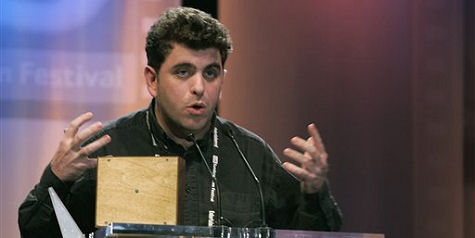
Eugene Jarecki discussing Why We Fight at the 2005 Sundance Film Festival
Otherwise…
Annapolis isn’t a precise revisiting of An Officer and a Gentleman but it’s obviously on similar turf with the element of boxing thrown in. Annapolis, boxing…Annapolis, boxing. Better Luck Tomorrow helmer Justin Lin is the director, and I should just keep my mouth shut until I see it.
Big Momma’s House 2 can have coitus with itself. Breaking News looks to me like a standard-issue Hong Kong cop thriller, and I’m not vigorous enough to try and figure the real truth of it. Mirage, Nanny McPhee and the IMAX film Roving Mars haven’t yet come into focus.
You don’t have confuse Tristram Shandy with Tristan and Isolde — “Tristram” has two r’s and the movie is fairly jaunty and flip, and the other one is bold-faced sincere.
Grabs

(l. to r.) Occasional Hollywood Elsewhere columnist Dylan Wells, Becca Payne and producer-screenwriter L.M. Kit Carson at Columbia student bar at Broadway and 113th Street — Tuesday, 12.27, 10:15 pm

On IRT Lexington uptown — Saturday, 12.24, 3:10 pm.

Troubador in waiting area for Union Square L line to Brooklyn — Monday, 12.26, 11:25 pm.

$30 jar of ginger orange foam scrub, purchased at Sabon on Spring Street on Sunday, 12.25, 8:40 pm.
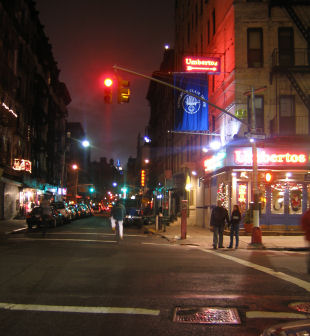
Mott Street in Little Italy — Thursday, 12.29, 8:20 pm.

Canal Street near Manhattan Bridge — Thursday, 12.29, 7:15 pm.

Grand Central Station — Tuesday, 12.27, 4:25 pm.

On L train heading to Brooklyn — Tuesday, 1.27, 11:45 pm
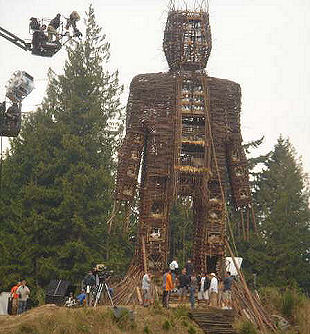
What would Nic Cage (or a character played by him), Joan of Arc and Oliver Reed’s “Father Grandier” character in The Devils have in common? Something, I think…unless Neil Labute has decided to re-shuffle the story of The Wicker Man.
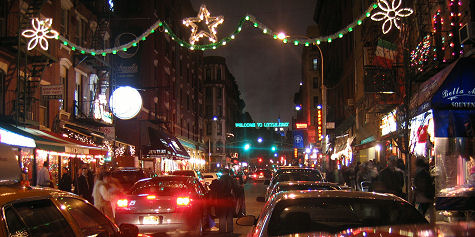
Thurday, 12.29, 8:15 pm.
Herzog vs. Huffman
“Thanks for celebrating Werner Herzog, the most amazing director working today. However…
“While I don’t disagree with you and Time‘s Richard Corliss for celebrating his little seen recent, wonderful documentary The White Diamond, I wonder if you were aware just how contrived the film is.
“Recently Herzog was in Seattle for a short festival of some of his recent films and in the q & a session afterwards he explained that pretty much everything said in the interview sessions in the film (particularly from the talkative local man who owned the rooster) was completely scripted.
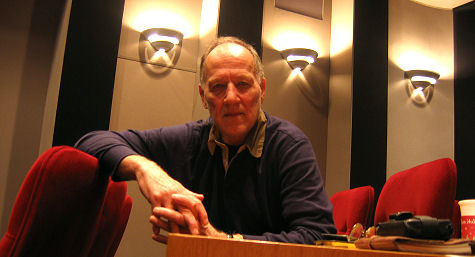
“Herzog said it in way that made it seem like he would be stunned if anyone could possibly think it was done any other way. He described in detail how he wrote complete speeches for the folks and how they would struggle to deliver them (the speeches are basically based on his conversations with the interviewees and Herzog’s own thoughts).
“If anything, knowing that this is how Herzog constructs his documentaries makes me like them even more. All documentaries are a succession of lies that form a particular person’s greater truth. I am just surprised that Herzog seemed to assume that everyone else was in on the secret.” — Richard Huffman, Seattle, WA.
Werner Herzog replies: “Jeffrey — [Huffman’s] questions about The White Diamond are too simplified. Why would I who postulates a cinema where you can trust your eyes again (Fitzcarraldo) ‘concoct’ elements of his ‘documentaries’?
“My inventions and stylizations aim to penetrate into a deeper truth, whereas Reality TV only pretends to depict the ‘real’ but captures just facts, and not truth.
“I have to be more precise to distinguish between two major issues:
“1. Whenever it comes to visual material, I want audiences to trust their eyes again, like the ship over a mountain (Fitzcarraldo). When I use a digital effect, like at the end of Invincible where the strongman’s kid brother flies away across the ocean: it is so obvious, and so stylized, and embedded in the dialogue that it is no contradiction to what I like to achieve.

“I welcome the recreation of dinosaurs on the screen.
“Equally: everything which constitutes the hardcore identity of a protagonist in my “documentaries” I would not touch (Littlre Dieter Needs to Fly, Grizzlly Man, Wings of Hope, etc.). However, I do invent Dieter’s dreams, and I do stage elements of his character (otherwise not visible), like Dieter opening and closing the door of his home. This is the ecstatic truth of his existence.
“2. Whatever I can do to get beyond the mere facts…to get deeper into a story of a ‘documentary’…to grasp a truth in its ecstatic state, I will do. The story of Graham Dorrington remains untouched, the catastrophy which befell Dieter Plage, the cinematographer, during his maiden flight on board Dorrington’s airship, happened as narrated, yet: I liked a seemingly unimportant side figure, Mark Anthony Jhap so much that I manoeuvred him more and more into the center – or rather epicenter – of the film. The leading character shifts from Dorrington to Mark Anthony, and at the end to Mark Anthony’s splendid rooster.
“The scene where Mark Anthony leads the camera during his foraging trip to the waterfall, watching it through one single drop of water, is completely scripted, and staged, and rehearsed. From off camera I am asking the most insipid New Age question: ‘Mark Anthony, do you see a whole universe in one single drop of water’, and Mark Anthony turns around with a slight smirk on his face, and responds: ‘I cannot hear what you say for the thunder that you are.’ I believe I shot the scene 5 or 6 times until I got the right, almost imperceptible smirk.
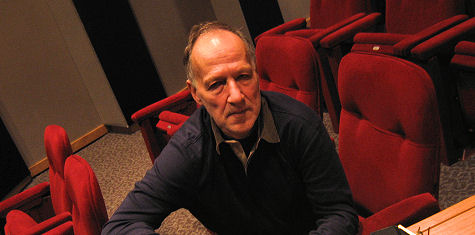
“Mark Anthony’s sentence appears verbatim in a previous film,
“What you and your audience also should be aware of is the fact that the drop of water was not water, but glycerin which has better properties for filming. Klaus Scheurich, a very accomplished wildlife cinematographer, shot this drop of ‘water’ with the inverted waterfall caught in it, and this — at first sight — looked like kitsch, but I got hooked to the image, and I was convinced that this waterdrop embedded in an environment of sheer fantasy would assume a different, a higher, an ecstatic quality.
“I think that this delicate line between reality, and fact, and truth needs to be more clearly defined. My Minnesota Declaration (you’ll find it on my website) does this. But what has to be made more clear is: with the onslaught of virtual realities WE HAVE TO RE-DEFINE REALITY: beyond Cinema Verite, beyond the documen- taries we usually see on TV, beyond the terrain which is not solid any longer, as if we were treading on thin ice.” – Werner Herzog












